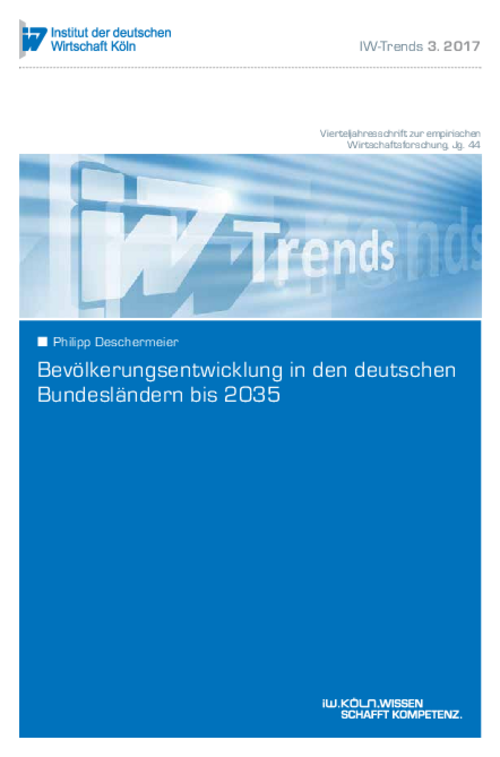As a result of record immigration in 2015 and the high net immigration projected for subsequent years, the long-expected population decline in Germany has now been postponed until 2035.

Regional Population Development in Germany to 2035
IW-Trends

As a result of record immigration in 2015 and the high net immigration projected for subsequent years, the long-expected population decline in Germany has now been postponed until 2035.
The forecast published by the Cologne Institute for Economic Research (IW) in 2016 expected Germany’s population to reach 83.1 million by 2035. However, this growth will be spread extremely unevenly. On the one hand, over the next two decades Berlin will grow into a city of four million and Hamburg will also increase its population appreciably. On the other hand, a total of seven of Germany’s 16 Länder, or states, most of them in the formerly Communist east, will see a drop in their populations. The demographic pressure on the labour market is growing in all states. Everywhere the ratio of those of working age to the remaining population is declining – thus raising the dependency ratio. In Bremen, Hamburg and Baden-Württemberg, though, this trend has already slowed and by 2025 the ratio in these states will have risen only minimally. In Brandenburg, Thuringia and the Saarland, however, the same year will see considerably more people not of working age for every hundred people in the labour force. With a dependency ratio of 97.2 Schleswig-Holstein is expected to top this table in 2035. Thus although Germany’s overall population will grow, its ageing will nonetheless confront the nation with daunting economic and societal challenges.

Philipp Deschermeier: Bevölkerungsentwicklung in den deutschen Bundesländern bis 2035
IW-Trends

More on the topic

Possible Developments in the Supply of Skilled Workers up to the Year 2040
The German labor market is on the verge of a fundamental upheaval. While the number of people in the labor force has risen steadily in recent decades, it is likely to drop significantly as soon as the baby boomers retire.
IW
The Social Situation of Young People from Non-German-Speaking Families
An analysis of the microcensus shows that in 2017, around 2.4 million children and adolescents in Germany lived in non-German-speaking households. This corresponds to 17.7 per cent of all minors (under the age of eighteen) and 47.0 per cent of those with a ...
IW
